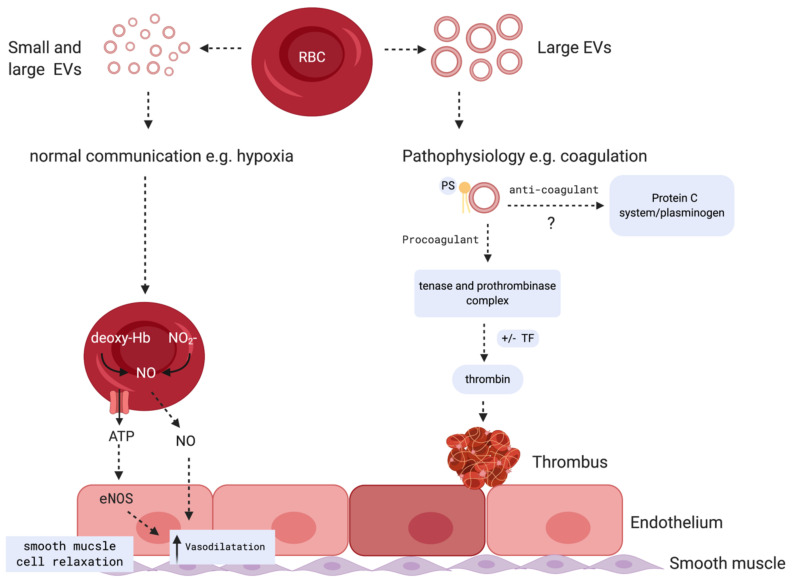Figure 4.
Potential biological role of RBCEVs: During hypoxia, small and large RBC vesicles carry factors that are responsible for NO production mediated by eNOS, resulting in an increase in vasodilation and smooth muscle cell relaxation (left panel). Large RBC vesicles are reported to play both pro and potential anti-coagulant roles (right panel): MVs mediate procoagulant activities by facilitating assembly of tenase and prothrombinase complexes on phosphatidylserine and promoting thrombin generation. Potential ability of MVs to mediate anticoagulant reactions through their interactions with protein S and activation of anticoagulant protein C system and plasminogen on their surface was reported. This process, in some circumstances, may create an anti-inflammatory and anti-coagulant response based on EV release from certain cells including neutrophils and platelets [116]. (Figure created with BioRender.com).

